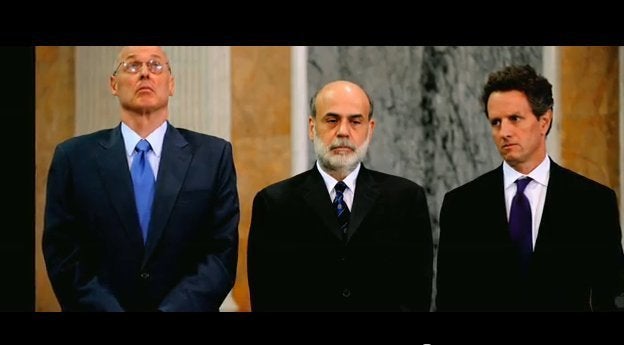
A few days ago I joined a group of my colleagues from The Greenlining Institute to see the new documentary, Inside Job. I don't normally go around telling people what to do, but seriously: Step away from the computer and go see this film.
We had a special motivation for seeing Inside Job, which lays out in painful detail how the subprime mortgage meltdown happened and how it tanked the economy: Greenlining's co-founder, Robert Gnaizda, is featured prominently. In a film that will leave any sane person furious and frustrated, he's highlighted one of precious few who saw the crisis coming and tried to sound a warning.
What filmmaker Charles Ferguson does -- better than just about anyone else thus far -- is connect the dots in a way that makes this very complex material understandable. He shows how a deregulated environment separated lenders from the consequences of their actions, producing a massive housing bubble that was built on a foundation of wishful thinking, speculation, inflated appraisals, bogus bond ratings and outright fraud.
The result was a speculative frenzy in which lenders could make a fast buck (hundreds of millions of fast bucks, actually) by making subprime loans, often misleadingly marketed to gloss over hidden time bombs like exploding interest rates, quickly bundling them into securities called collateralized debt obligations (CDOs) and selling them to investors. Without any sort of meaningful oversight to ensure that increasingly complex financial instruments bore some connection to reality, financial operators simply made stuff up -- from appraisals phonied up to make a loan seem viable when it really wasn't to AAA ratings given to securities that close examination would have shown to be nearly worthless.
Much of what happened was utterly mad: For example, borrowers were allowed to borrow 99.3 percent of value of their homes, meaning they had basically no investment in the house, and yet two thirds of the securities backed by these loans were rated AAA, as safe as government bonds. It was insane, but while home prices kept skyrocketing it was easy to ignore that the whole boom was built on air.
Enter Greenlining's Bob Gnaizda, one of the few who dared to say that trouble was brewing. In meetings with then Federal Reserve Board Chair Alan Greenspan and other officials, he warned of dangerous and dishonest marketing of subprime loans that was bound to lead to waves of foreclosures and trouble for the whole housing market. But regulators like Greenspan, ideologically opposed to regulation, refused to believe the market wouldn't correct itself. And everyone in the jungle of lenders and speculators was too busy making piles of money to be interested in the long-term consequences.
As we survey the ongoing wreckage -- massive unemployment and millions more foreclosures coming if nothing is done -- it's tempting to say, we told you so. And we did, literally.
But instead of gloating about predicting the last disaster, it may be more useful to talk about how to stop the next one, and that's what I'll be spending the next several weeks doing. More troubles are coming, but like the subprime crash, they're preventable -- if we chose to put aside the conventional wisdom.
NEXT WEEK: What Inside Job didn't show, and what it means.